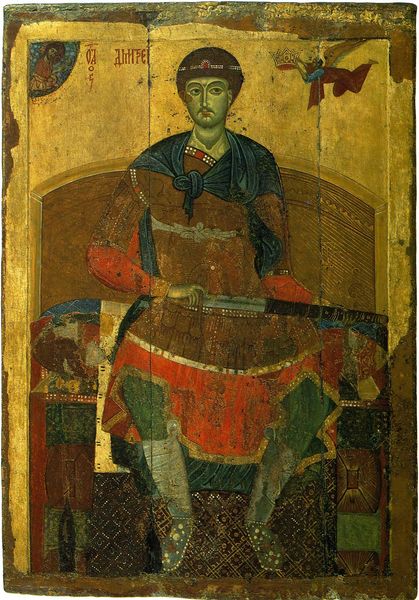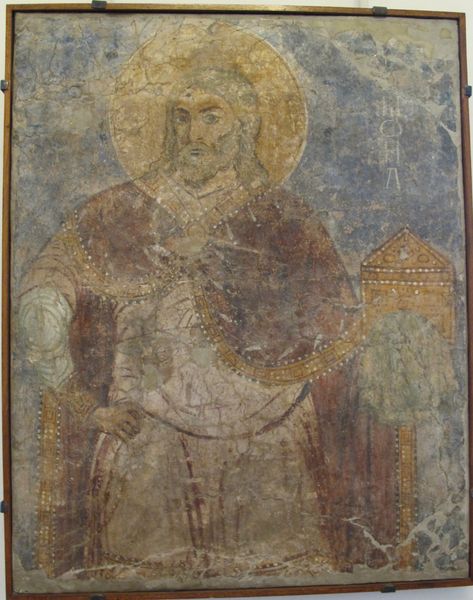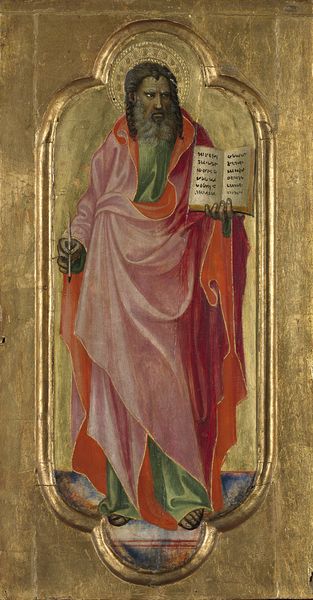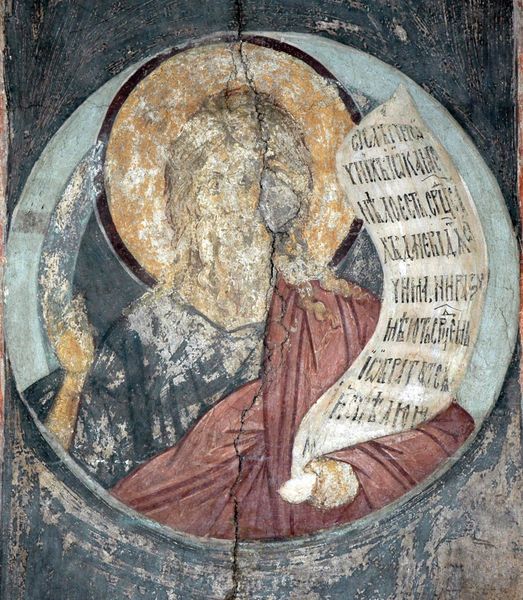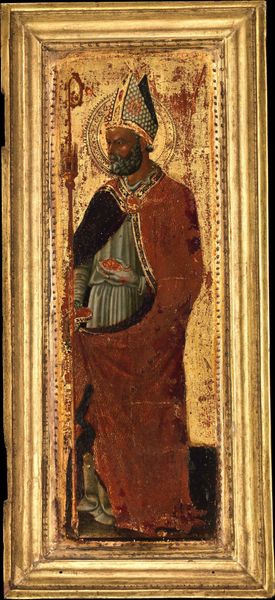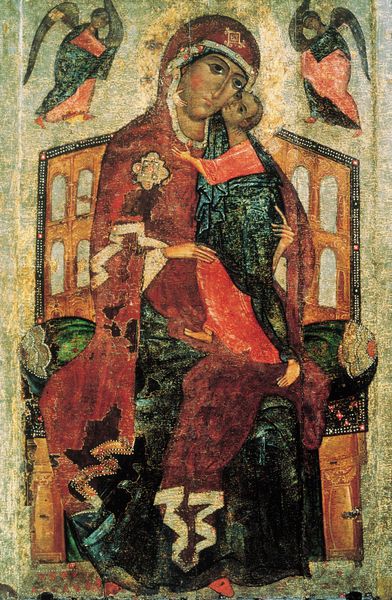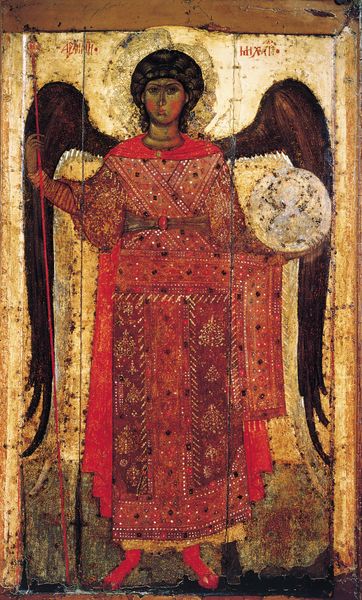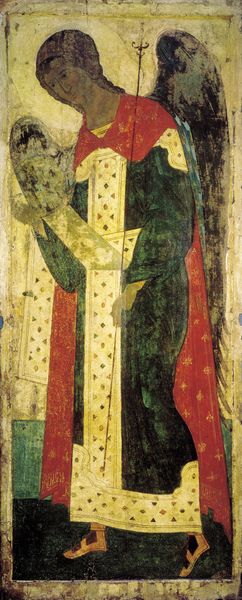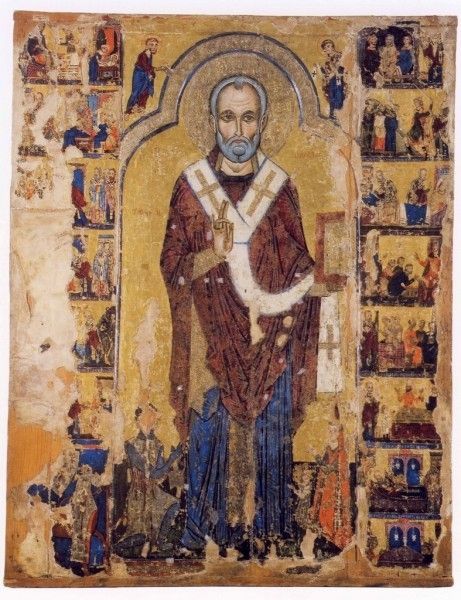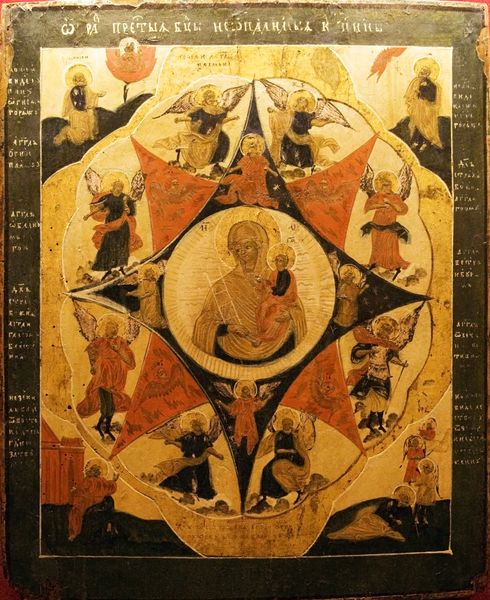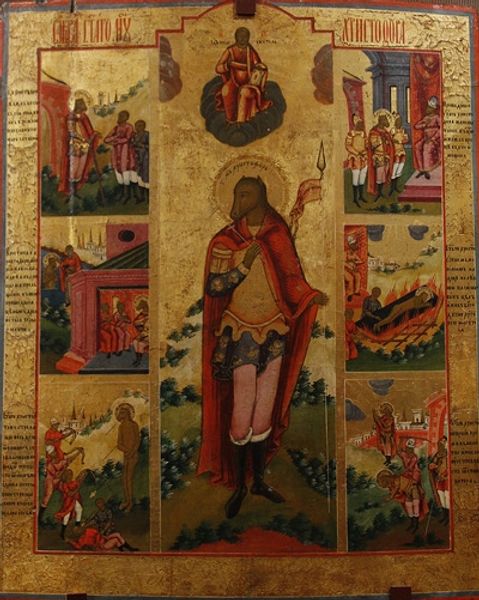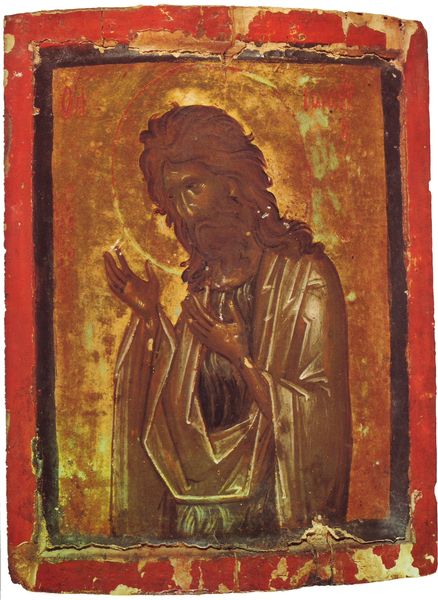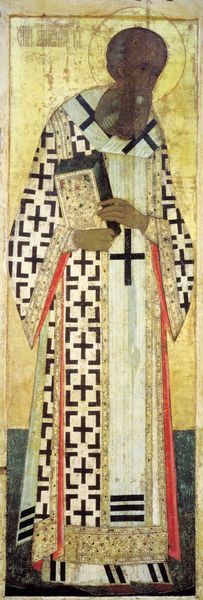
tempera, painting
#
portrait
#
byzantine-art
#
medieval
#
tempera
#
painting
#
figuration
#
oil painting
#
jesus-christ
#
christianity
#
history-painting
Dimensions: 314 x 220 cm
Copyright: Public domain
"Christ in Majesty" was made by Andrei Rublev around the 15th century in Vladimir, Russia, with traditional materials like wood panel, gesso, and tempera. The making of this icon involved a labor-intensive process rooted in Byzantine traditions, where craftsmanship and spirituality were deeply intertwined. Rublev, as an accomplished iconographer, would have started by preparing a wooden panel with layers of gesso, a white coating that provided a smooth surface for painting. He then applied tempera paint, made from pigments mixed with egg yolk, known for its vibrant colors and durability. The artist carefully built up layers of paint, meticulously defining the contours of Christ's face, garments, and the surrounding geometric shapes. Consider the countless hours of skilled work required to achieve such a detailed and luminous image, from the preparation of the materials to the precise brushstrokes. In this context, labor becomes a form of devotion, and craftsmanship elevates the artwork beyond mere representation, imbuing it with spiritual significance. By understanding the materials, making, and context, we gain a deeper appreciation for the artistry and meaning embedded in this iconic masterpiece, which challenges traditional distinctions between fine art and craft.
Comments
No comments
Be the first to comment and join the conversation on the ultimate creative platform.
